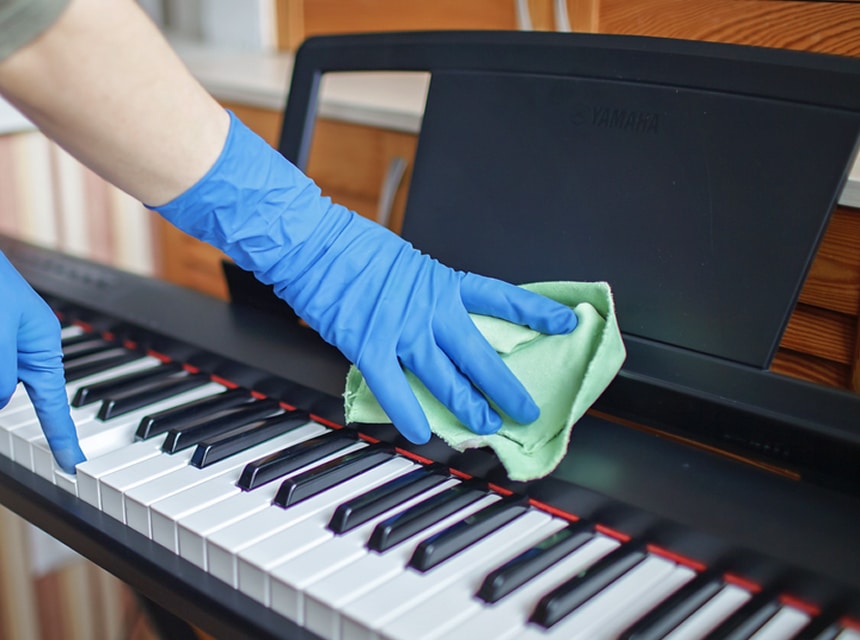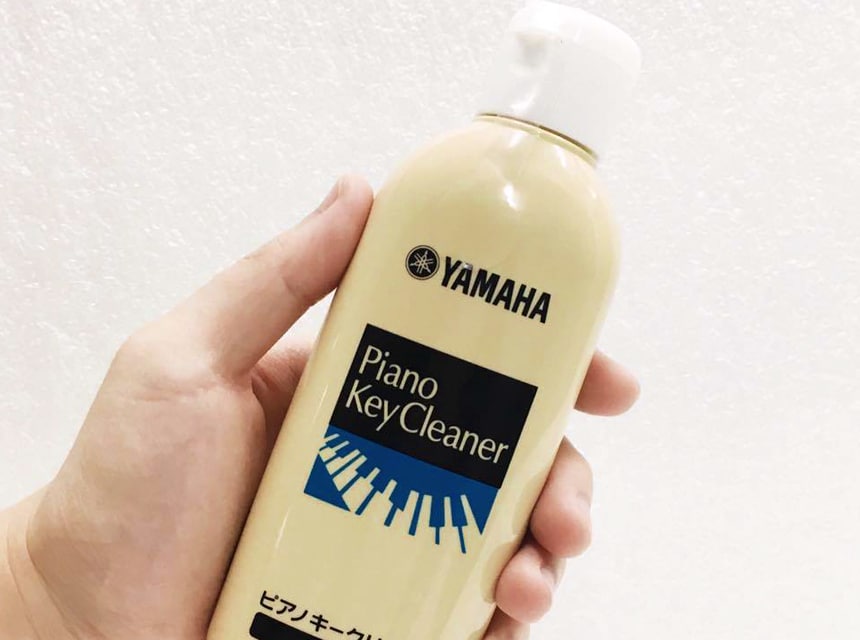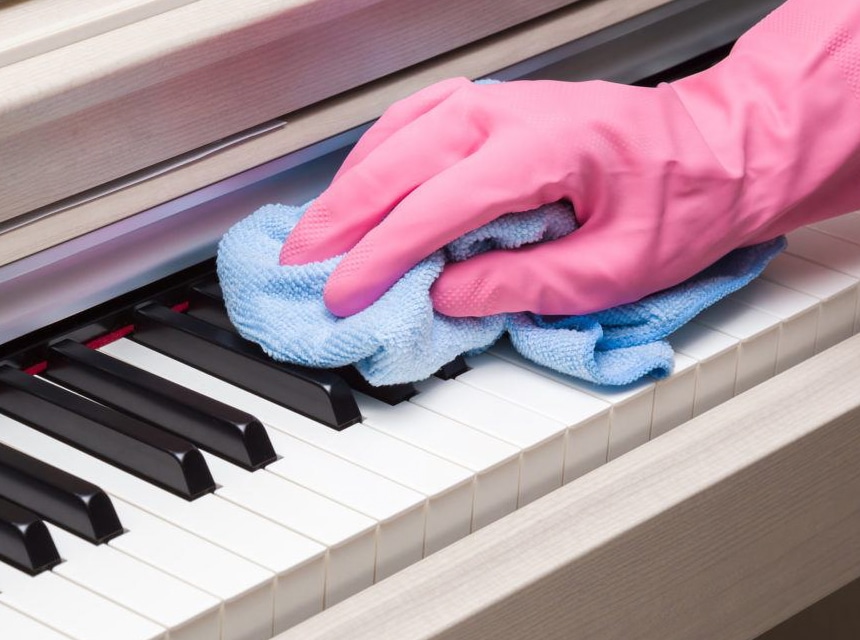
It’s important to clean your digital piano or any piano for that matter, especially if you use it a lot. Dirt can build up over time, making your piano look unkept as well as shortening the longevity of the piano. The dirt build-up can also affect how your piano functions which will change the sound you produce.
Not to mention all of the germs that could be roaming around on the keys. You may be interested in knowing how to clean digital piano keys, as this step is vital in maintaining the use and look of your piano. Using the wrong products can damage your piano, and the same goes for not cleaning it at all. Don’t throw away your money by damaging your piano while trying to clean it. Instead, continue reading to find out how to clean digital piano keys the right way. We’ll be breaking down everything you need to know.
You could have a digital piano that’s under $500 or the YAMAHA P71 88 Key Weighted Action Digital Piano, which comes highly recommended due to its compact style, simple operation, and Yamaha premium piano voices. Whether you have a high-end or budget-friendly digital piano cleaning, it isn’t as difficult as you’d think because it can be done in a few simple steps. Let’s break them down:
 Dampen your cloth on one half, not too wet though, as the water will drip through the keys.
Dampen your cloth on one half, not too wet though, as the water will drip through the keys. Use the dry side of the cloth to remove any residue left behind.
Use the dry side of the cloth to remove any residue left behind.If your piano is being used every day, it’s recommended that cleaning should occur every few weeks. On the other hand, cleaning it every few months is fine if you don’t use your digital piano often.
Fortunately, when it comes to cleaning your piano keys, there aren’t that many supplies needed. You can buy a piano cleaner, such as the MusicNomand All Purpose Key ONE Cleaner, which will remove dirt, grime, and fingerprints from any piano. You can also use a small amount of gentle soap with warm water to remove visible dirt off of your keys. Be gentle when cleaning your piano keys by using a lint-free and dye-free cloth.
These days most pianos have plastic keys, not ivory keys Trusted Source Petroleum in Real Life: Piano keys - Context Magazine by CAPP Most pianos have 52 white keys and 36 black keys for a total of 88 keys. In acoustic pianos, the keys themselves are made of wood—often spruce or basswood. It is only the thin top of the white keys that is made of ivory or plastic. (The black keys are made of ebony or another hardwood that’s been stained black.) The plastic often used for piano key tops is a kind of acrylic called ABS – acrylonitrile butadiene styrene – an opaque thermoplastic polymer. Thermoplastics like ABS liquefy, which allows them to be injection molded and shaped. context.capp.ca . However, if your piano does have ivory or ebony keys use a gentle soap, such as Castile soap, with warm water as this will clean the keys without damaging them. However, it’s important not to use a colored cloth as the dye can affect the keys. Instead, use a dye-free cloth, so no color is transferred.
Another thing to note would be that sometimes if your black keys have been painted, instead of being black wood or plastic, the paint can rub off and stain your white keys. It’s then suggested to clean your black keys first or last in order to avoid discoloring your white keys.
If you have a white digital piano, you can use the same cleaning methods but use a damp cloth so as not to affect the electronics inside the device.
Buying a piano is not a cheap purchase Trusted Source The challenges of making a digital piano sound real Digital pianos and keyboards have existed for many years, but technological limitations meant they often struggled to reproduce the sounds of the real instrument. www.bbc.com , so it can become frustrating when your white keys start looking more yellow than white. You can whiten your keys in order to get them back to how they should be.
You can do this by mixing half a cup of white vinegar with two cups of warm water, and after dampening your dye-free cloth, wipe the white keys clean. If you don’t have vinegar on hand, you can also use a toothpaste that contains baking soda. Make sure the toothpaste is white, though, as colored toothpaste can dye your keys.
Use a toothbrush when using toothpaste and gently brush the keys before wiping them down with a clean damp cloth. If you do this once a week, you’ll definitely notice a difference. Whichever method you choose, make sure you are gentle with the cleaning process.
Whether you have a digital piano that’s under $300 or under $1000, taking good care of it is extremely important in ensuring that you get your money’s worth.
When it comes time for you to clean your piano keys, there are things you shouldn’t do as they can cause damage to your piano. Of course, this is something you would want to avoid, and so with that being said, don’t use any products that contain harsh chemicals on your musical instrument.
Harsh chemicals can damage your piano even if your intentions are good.
Here are a few tips and tricks to ensure that your digital piano stays as clean as possible:
When it comes to owning a digital piano, it’s important to think about the upkeep you’ll need to do. It’s not just to make your piano look good but also to play properly. Learning how to clean digital piano keys is a step you can’t ignore.
Purchasing any sort of piano is an investment and if you or anyone else is using it every day, make sure you’re cleaning it every few months to avoid the spread of germs and to make sure the piano looks good.
After reading today’s article, you should now know how clean your piano keys the right way in order to prolong the piano’s lifespan. Filth and grime build-up will stop you from achieving the musical masterpiece you’re working toward.
